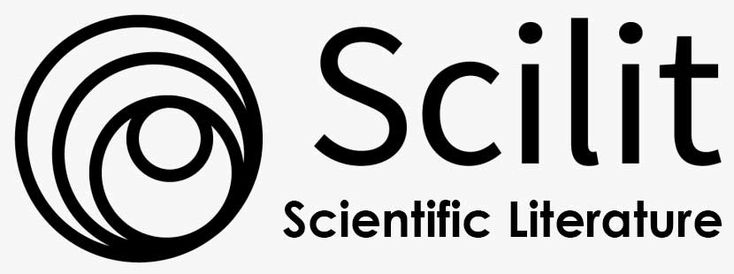التحقيق في كفاءة إدارة الفصول الدراسية لمعلمي اللغة الإنجليزية كلغة أجنبية في الجامعة
DOI:
https://doi.org/10.26436/hjuoz.2023.11.3.1150الكلمات المفتاحية:
إدارة الفصل ، الكفاءة ، مدرسون جامعة اللغة الإنجليزية بوصفها لغة أجنبية ، العلاقة، إدارة الوقت.الملخص
تهدف الدراسة الحالية إلى التحقق من كفاءة مدرسي اللغة الإنجليزية بوصفها لغة أجنبية في إدارة الفصول الدراسية. تعد إدارة الفصل الدراسي أمرًا ضروريًا لتهيئة مناخ ملائم للتعلم إذ إنها تشتمل على التقنيات والعمليات التي يتعامل معها المدرسون لخلق جو يشجع كل من التدريس والتعلم. تركز الدراسة على ثلاثة جوانب لكفاءة إدارة الفصل الدراسي ، وهي تكوين علاقات إيجابية مع الطلاب ، وإدارة الوقت ، والتحكم في الفصل. لتحقيق الأهداف المحددة ، تم إجراء استبيان بمقياس ليكرت المكون من 15 عنصرًا لعينة من 37 معلمًا جامعيًا في قسم اللغة الإنجليزية في جامعة زاخو وجامعة نوروز وجامعة دهوك خلال العام الدراسي 2021-2022. تم تحليل البيانات التي تم جمعها باستخدام (One Sample T-Test)على برنامج SPSS . أظهرت النتائج أن المعلمين كانوا أكفياء في تكوين علاقات إيجابية مع الطلاب ولديهم الكفاءة لإدارة الوقت بشكل فعال والتحكم في الفصل بنجاح. ومن المتوقع أن هذه النتائج ستجعل مدرسي اللغة الإنجليزية بوصفها لغة أجنبية يتمتعون برؤية ثاقبة للتعامل مع كفاءات التدريس المهنية الحديثة ومواكبتها.
التنزيلات
المراجع
Boyatzis, R. E. (1982). The competent manager: A mode for effective performance. New York: Wiley.
Boyatzis, R. E. (2008). Competencies in the 21st century. Journal of Management Development, 27(1), 5–12.
Brosh, H. (1996). Perceived characteristics of the effective language teacher. Foreign Lang. Ann., vol. 29, no. 2, pp. 125–136.
Canagarajah, A. (1999). Resisting linguistic imperialism in English teaching. Oxford: Oxford University Press.
Caupin. (2006). ICB – IPMA Competence Baseline. International Project Management Association.
Cheung, H. (2006). The measurement of teacher efficacy: Hong Kong primary in‐service teachers,” J. Educ. Teach., vol. 32, no. 4, pp. 435–451.
Doyle, W. (1986). Classroom organization and management. In M. C. Wittrock (Ed.), Handbook of Research on Teaching. New York: Macmillan, (pp. 392–431)
Evertson, C. M., & Weinstein, C. S. (Eds.). (2006). Handbook of classroom management: Research, practice, and contemporary issues. Mahwah, NJ: Erlbaum.
Froyen, L. A., & Iverson, A. M. 1999. School wide and classroom management: The reflective educator-leader (3rd ed.). Upper Saddle River, NJ: Prentice-Hall.
Gleason, B. and Jaramillo Cherrez, N. (2021), “Design thinking approach to global collaboration and empowered learning: virtual exchange as innovation in a teacher education course”, Techtrends, Vol. 65 No. 3, pp. 348-358, doi: 10.1007/s11528-020-00573-6.
Guerrero, D., & De los Ríos, I. (2012). Professional Competences: a Classification of International Models. Procedia - Social and Behavioral Sciences, 46, 1290–1296.
Kazemi, S., Ashraf, H., Motallebzadeh, K. and Zeraatpishe, M. (2020), “Development and validation of a null curriculum questionnaire focusing on 21st century skills using the Rasch model”, Cogent Education, Vol. 7 No. 1, doi: 10.1080/2331186X.2020.1736849.
Krause, K. L., Bochner, S., & Duchesne, S. 2003. Educational psychology for learning and teaching. Australia: Thomson.
Le Deist, F. D., & Winterton, J. (2005). What is competence? Human Resource Development International, 8(1), 27–46.
Leedy, P. D. (1993). Practical research: planning and design. New Jersey: Prentice-Hall.
Martin, N. K. & Sass, D. (2010). Construct Validation of the Behavior and Instructional Management Scale. Teacher and Teacher Education. University of Texas, San Antonio.
Marzano, R. J., Marzano, J. S., & Pickering, D. J. (2003). Classroom management that works. Research-based strategies for every teacher. Alexandria, VA: Association for Supervision and Curriculum Development (ASCD)
McArthur, J.R. (2002). The why, what, and how of teaching children social skills. The Social Studies, 93, 183-186.McIntosh et al's (2004) "Teaching Transitions: Techniques for Promoting Success Between Lessons" (TEACHING Exceptional Children, 37(1), 32-38).
McClelland, D. C. (1973). Testing for competence rather than for “intelligence”. The American Psychologist, 28(1), 1–14.
OECD (2018), “The future of education and skills education 2030”, available at: https://www.oecd.org/education/2030/E2030%20Position%20Paper%20(05.04.2018).pdf.
Page, C., & Wilson. (1994). Management competencies in New Zealand. On the inside looking in Wellington. Ministry of Commerce – 5.
Pettis, J. (2002). Developing our professional competence: Some reflections. Methodol. Lang. Teach. An Anthol. Curr. Pract., pp. 393– 396.
Richards, J. C. (2010). Competence and performance in language teaching. RELC Journal, 41(2), 101-122. https://doi.org/10.1177/0033688210372953
Rodriguez, D., Patel, R., Bright, A., Gregory, D., & Gowing, M. K. (2002). Developing competency models to promote integrated human resource practices. Human Resource Management, 41(3), 309–324.
Rogers, C., & Freiberg, J. (1994). Freedom to learn (3rd Ed.). Upper Saddle River, NJ: Merrill Publishing.
Rosas, C., & West, M. (2009). Teachers Beliefs about Classroom Management: Pre-Service and Inservice Teachers’ Beliefs about Classroom Management. International Journal of Applied Educational Studies, 5, 54-61.
Shippmann, J. S., Ash, R. A., Batjtsta, M., Carr, L., Eyde, L. D., Hesketh, B., ... & Sanchez, J. I. (2000). The practice of competency modeling. Personnel Psychology, 53(3), 703–740.
Spencer, L. M., & Spencer, S. M. (1993). Competence at work: Models for superior performance. New York: John Wiley & Sons, Inc.
Stern, H. H. (1975). What can we learn from the good language learner? Can. Mod. Lang. Rev., vol. 31, no. 4, pp. 304–319.
Tan O.S., Parsons, R.D., Hinson, S.L., & Sardo-Brown, D. 2003. Educational psychology: A practitioner-researcher approach. Australia: Thomson
van der Klink, M., & Boon, J. (2002). The investigation of competencies within professional domains. Human Resource Development International, 5(4), 411-424.
Vathanophas, V., & Thai-ngam, J. (2007). Competency Requirements for Effective Job Performance in The Thai Public Sector. Contemporary Management Research, 3(1), 45– 70.
Vazirani, N. (2010). Competencies and Competency Model - A Brief Overview of its Development and Application. SIES Journal of Management, 7(1), 121–131.
Willower, D. (1975). Some comments on inquiries on schools and pupil control. Teachers College Record, 77, 219–230.
Willower, D. J.; Eidell, T. L., & Hoy, W. K. (1967). The school and pupil control ideology. Penn State Studies Monographs No. 24. University Park: Pennsylvania State University.
Wolfgang, C. H. (2001). Solving discipline and classroom management problems: Methods and models for today’s teachers. (5th ed.). New York: John Wiley.
Wolfgang, C. H., & Glickman, C. D. (1980). Solving discipline problems: Strategies for classroom teachers. Boston: Allyn and Bacon.
التنزيلات
منشور
كيفية الاقتباس
إصدار
القسم
الرخصة
الحقوق الفكرية (c) 2023 Karwan J. Muhammed, Hussein A. Ahmed

هذا العمل مرخص بموجب Creative Commons Attribution-NonCommercial-ShareAlike 4.0 International License.
يوافق المؤلفين الذين ينشرون في هذه المجلة على المصطلحات التالية
[CC BY-NC-SA 4.0] يحتفظ المؤلفون بحقوق الطبع والنشر ومنح حق المجلة في النشر الأول مع العمل المرخص له بموجب ترخيص مشاع المبدع للإسناد
الذي يسمح للآخرين بمشاركة العمل مع الإقرار بحقوق التأليف والنشر الأولي في هذا مجلة
مكن للمؤلفين الدخول في ترتيبات إضافية منفصلة للتوزيع غير الحصري للنسخة المنشورة من المجلة، مع الإقرار بإصدارها الأولي في هذه المجلة
يسمح ويشجع المؤلفين على نشر عملهم عبر الإنترنت

















